Everything you need to know about mute swans
Mute swans are regularly seen on water bodies within the urban environment. This makes them a regular sighting whilst going out for our daily exercise local to home. They are the largest and heaviest water bird in the British Isles and the only permanent resident swan which does not migrate (though they may move around the country in winter to better feeding grounds).
What does a mute swan look like?
Adults are completely white, but the head can be stained rusty from feeding in acidic waters.
The male is known as a cob and the female as a pen. They appear identical but the male is larger, with a slightly longer head and body and wider wingspan. The black knob at the base of the male’s bill swells during the breeding season and becomes noticeably larger than the females. The rest of the year it can be difficult to distinguish between males and females.
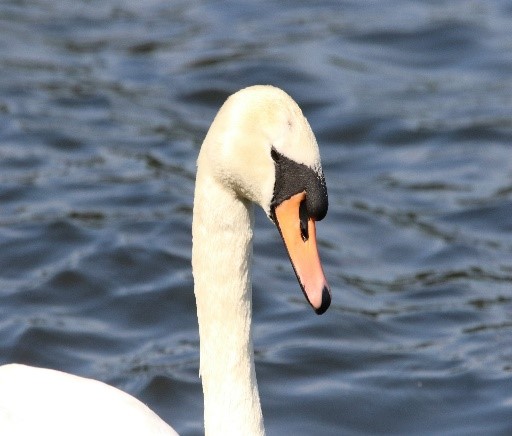
©Marion Moore
The Juvenile bill lacks the frontal knob, is pinkish-grey, with black areas as adult, becoming pinker during their first winter and attaining adult shape and colour by second winter.
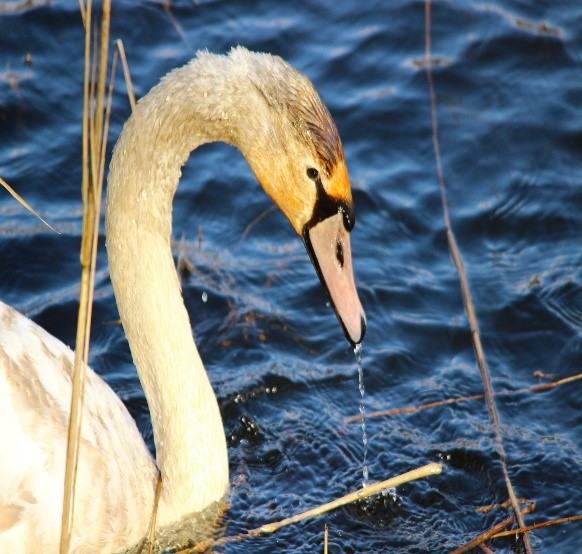
©Marion Moore
Young swans (cygnets) may be dusky brown-grey all over, with a grey-black bill.
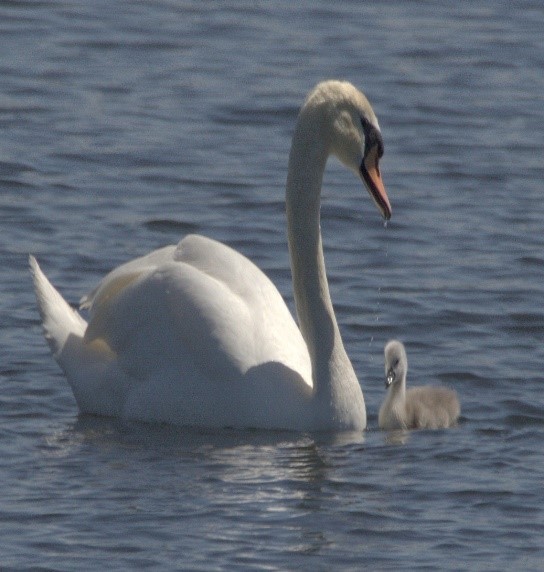
©Marion Moore
What noises do they make?
As the name implies, they are the least vocal of swans, but by no means mute. They utter short grunts and hisses. During the breeding period they make short, loud snorts, but do not make the honking flight calls of other species. The only sound is the beating of the wings.
They feed primarily by reaching below surface with their long neck, frequently upending, but will also dabble and graze on the land. They favour lowland freshwater lakes, pools, reservoirs, gravel-pits, rivers, canals and park-lakes. They are also seen, on estuaries, coastal brackish lagoons and even in sheltered coastal bays.
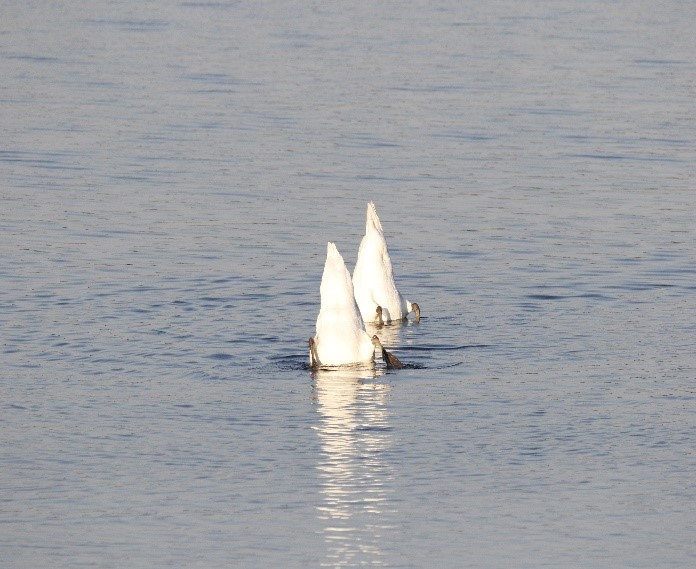
©Marion Moore
Pair bonding
Pair bonding takes place from the age of two although swans are not generally mature until three years old and may breed at this age if there is a territory available. The size of the territory is determined by the amount of natural food. In areas where the supply of common duckweed or similar is plentiful pairs may breed in fairly close proximity.
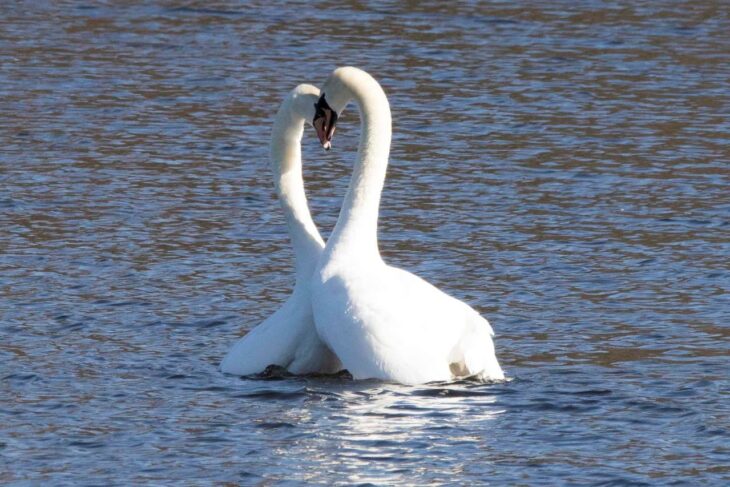
©Marion Moore
A pair of swans will generally remain in the same area for life using the same nest site. Provided both swans remain healthy they will usually stay together. Territorial disputes can get nasty and involve fights to the death. Whilst unlikely to pine to death at the loss of a mate, swans will generally go through a period of mourning. There are, however, instances of swans changing partners, usually where a stronger cob takes over.
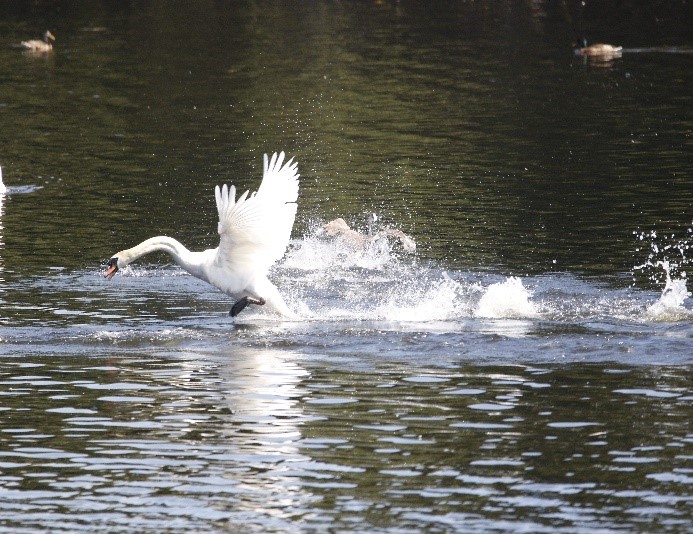
©Marion Moore
Breeding
Swans are strongly territorial in the breeding season, driving most other wildfowl from the vicinity of nest. It is important at this time of year to give them a wide berth when walking, particularly if you have a canine companion with you.
The nest is a huge mound of vegetation, close to the waterside, often among tall fringe vegetation. Swans breed in the Spring, laying an egg every other day, up to a total of 5 to 12 eggs. The female has an area on her underside which becomes completely bare called a brood patch. She will pluck the feathers from this area, using them to line the nest, this allows the eggs to sit closer to her body to keep them warm during incubation. She will incubate the eggs for 35-42 days turning the eggs with her bill. The male will keep the eggs warm and protect the nest whilst the female leaves the nest to feed and preen. The male has no brood patch and are rarely able to incubate the eggs unless the cygnets are almost ready to hatch. The whole clutch of eggs generally hatches within a 24-hour period, the cygnets remain on the nest for a further 24 hours before entering the water. The parents pull up weed and stir up sediment from the riverbed for the cygnets.
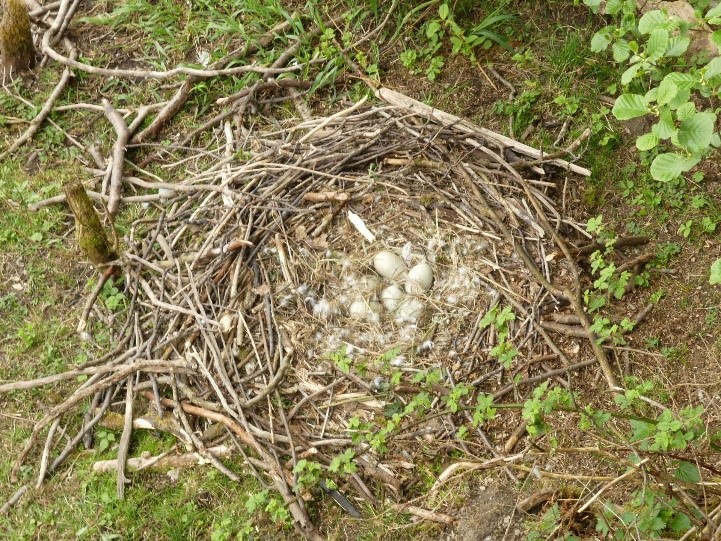
©Marion Moore
Whilst they are small, the cygnets are often carried on the mothers back. Males will be aggressive, swimming in jerking movements towards intruders, with inner wing feathers arched and neck resting back on shoulders.
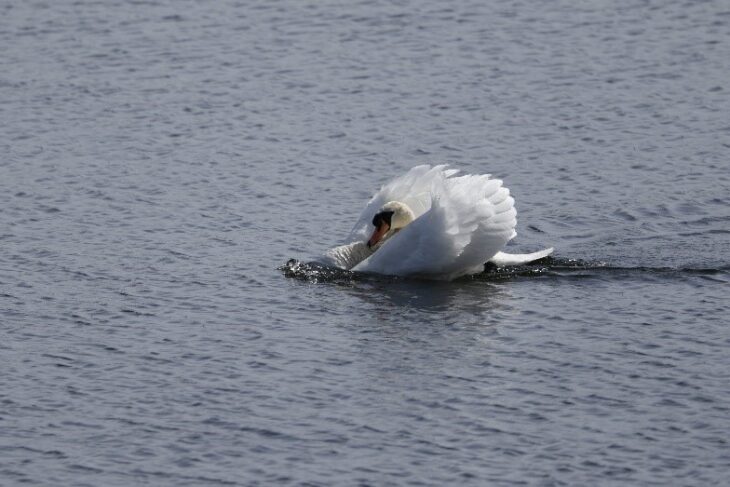
©Marion Moore
Cygnets are grey when they hatch with black beaks and gradually turn brown over the first six months at which time they learn to fly. By one year old they are predominantly white but the beak remains grey/pink. Full white plumage and orange beak come with maturity. Immature and non-breeding swans moult first. Breeding females moult next and when the female is completely finished moulting and able to fly again the male then moults. This ensures that one parent can defend the cygnets if necessary. Whilst resting, swans will often tuck one foot up on their back, possibly to dry – this often leads to speculation that they have an injury.
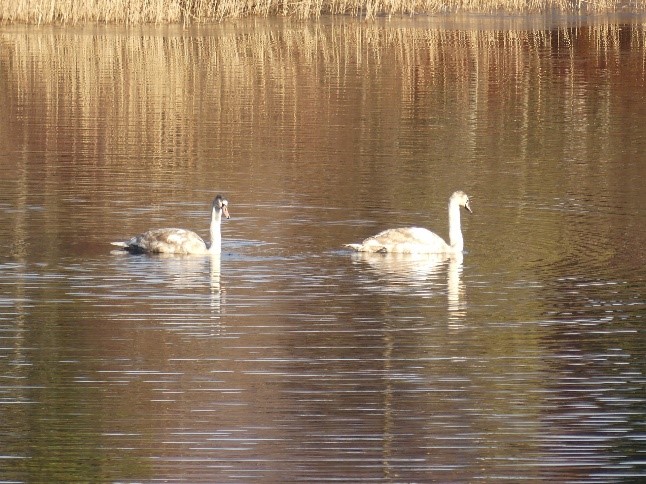
©Marion Moore
At times the cygnets are reluctant to leave their parents and eventually the parents may turn on them to encourage them to leave, so they can prepare for the next breeding season. Groups of immature swans and some older birds seeking a new mate or those too old to breed, often congregate in non-breeding flocks.
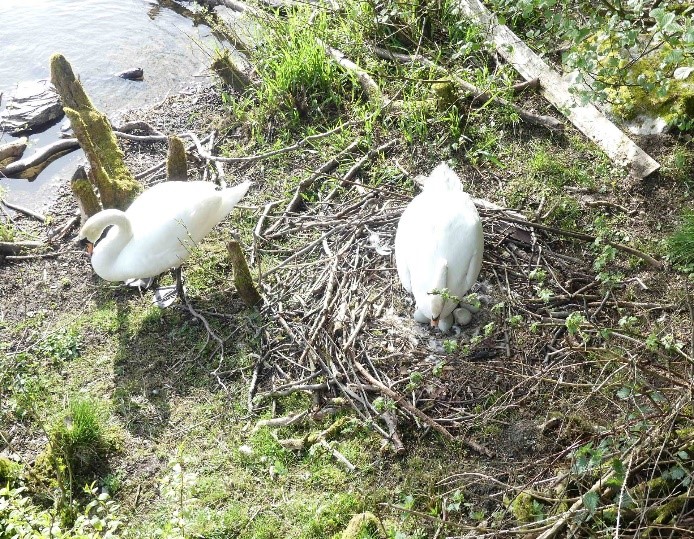
©Marion Moore
In their natural habitat they can live for 20 years or more.
Swans and the law
Swans are a protected species under the Wildlife and Countryside Act 1981. Swans, their nests and eggs are protected by this legislation and it is illegal to kill, harm or disturb them in any way.
If for some reason the eggs are abandoned it is against the law to take the eggs and incubate them artificially. They may only be removed or handled by recognised groups who should act in the best interest of a sick or injured bird. Should you come across an injured swan, please call the SSPCA or another recognised animal rescue who will be able to assist.
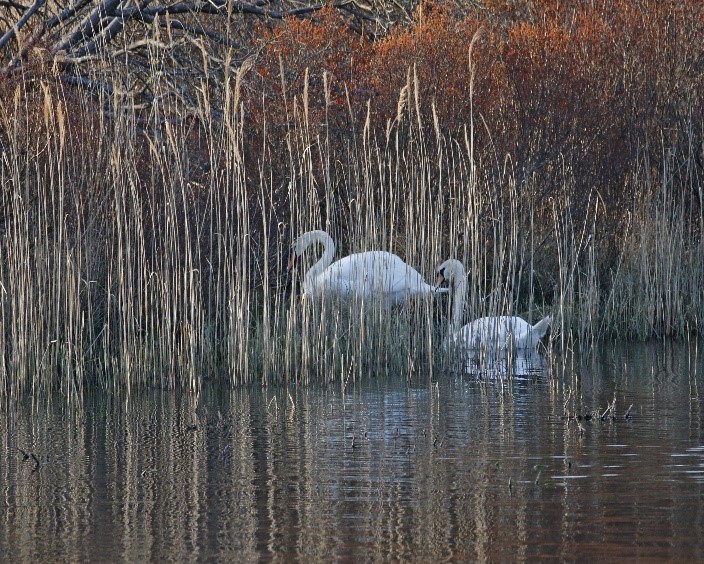
©Marion Moore
Marion Moore, Volunteer and Amy Bastow, Visitor Centre Assistant
Help protect Scotland’s wildlife
Our work to save Scotland’s wildlife is made possible thanks to the generosity of our members and supporters.
Join today from just £3 a month to help protect the species you love.
Preface
Mute swans are regularly seen on water bodies within the urban environment. This makes them a regular sighting whilst going out for our daily exercise local to home. They are …
